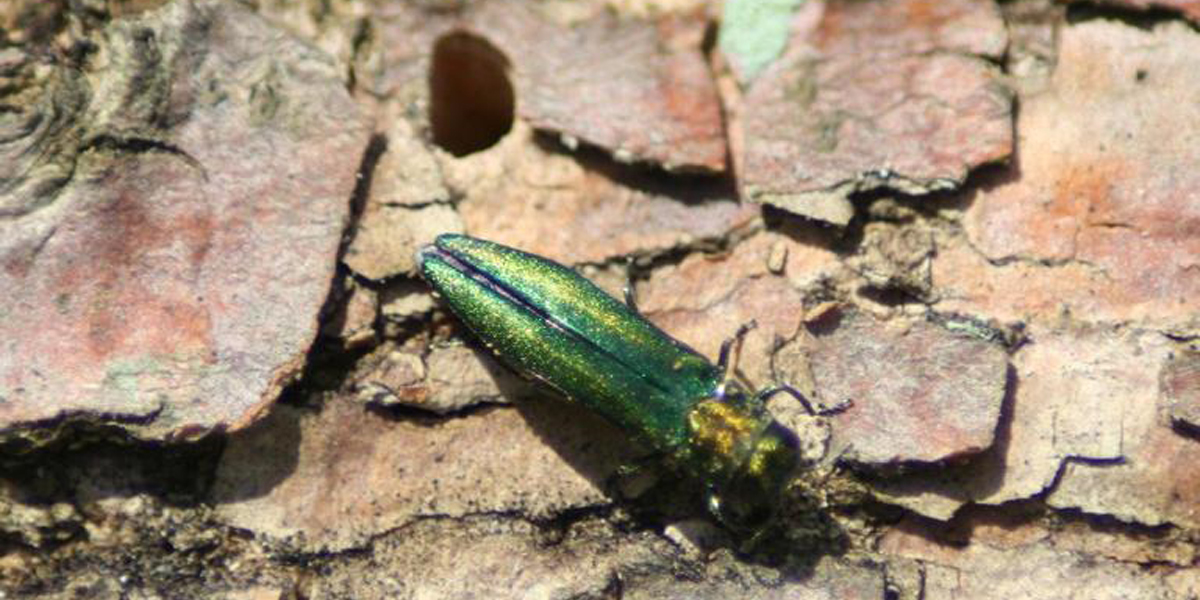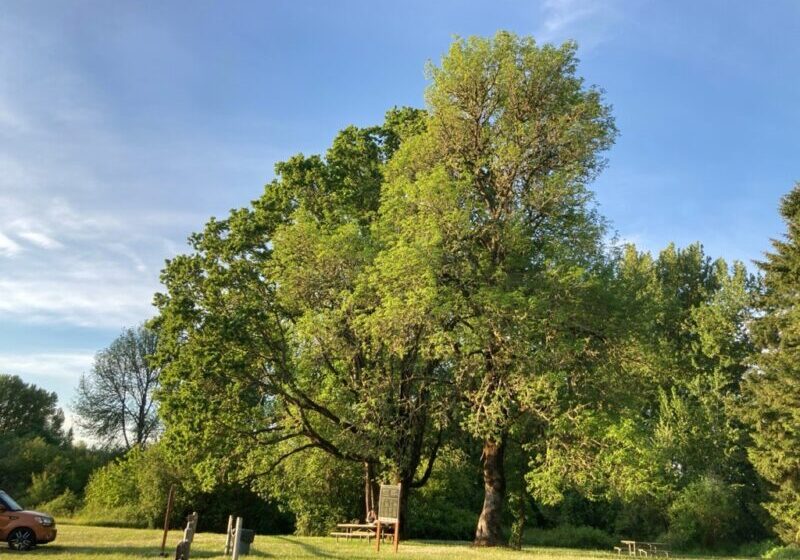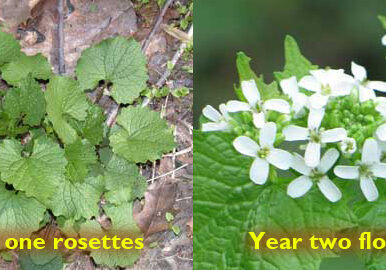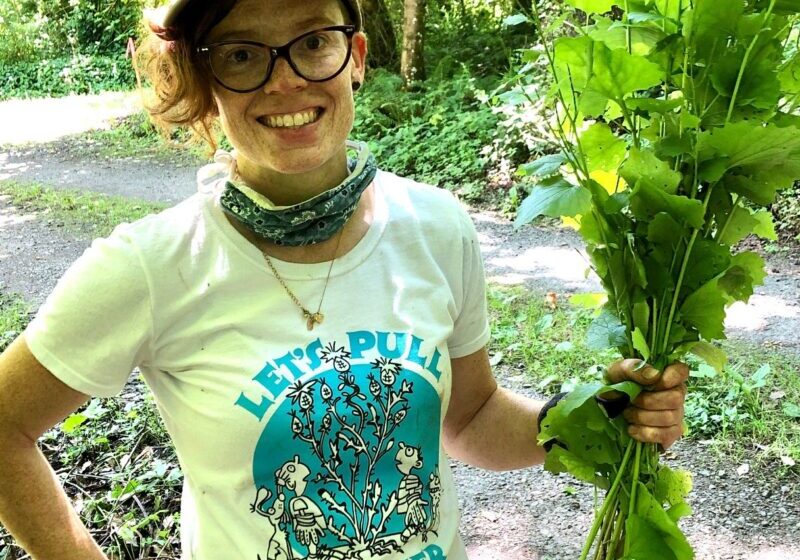For the most recent information on Emerald Ash Borer, please see the entry on it in our Invasive Species Directory, which is updated as developments occur.
The emerald ash borer (Agrilus planipennis) is considered the most destructive forest pest in North America. It is a very small, yet extremely harmful non-native insect that kills all species of ash trees. Emerald ash borer (EAB) has decimated millions of ash trees since it was discovered in Michigan in 2002. Biologists have been tracking its inevitable spread across the country, and it was finally discovered in the Forest Grove, Oregon area in 2022. In the greater Portland area and throughout the Willamette Valley, we are especially concerned about the devastating effects this insect will have on Oregon ash (Fraxinus latifolia). This tree is critically important for forested wetlands and riparian areasRiparian areas The land alongside a stream, creek, river, or floodplain. See the regions in Oregon most at risk. For some of our ash-dominated wetlands, there is no native canopy-forming tree that grows in the same conditions.
Oregon is the 36th state to be affected, and the borer has already started killing ash here. The beetles lay their eggs inside the tree, where the larvae later feed on the tissue below the bark, slowly killing the tree. It can take 4 to 6 years for an infested tree to die, and the harm may not be noticed for the first few years. Larvae pupate into adult beetles inside the tree and bore their way out through the bark; they then feed on the leaves of host trees. While most females lay their eggs on trees close to where they emerge (within 100 yards), a few will disperse up to 2–3 miles. Any ash trees within 30 miles of an infestation are, therefore, considered at risk. West Multnomah’s district is within 30 miles of the Forest Grove infestation.
What can you do?
Prevent new introductions: If you use firewood, buy and use firewood locally (within 10 miles of harvest location) and transport only firewood that has been heat-treated and certified as pest-free. Transport of firewood and nursery stock are the major pathways for the spread of this destructive beetle.
Slow the Spread: Learn to recognize ash trees and look for signs of poor tree health and emerald ash borer infestation. Map any ash trees you find on iNaturalist. Look for the following signs and symptoms in ash trees:
- Dead or dying ash trees or branches, particularly high up in the canopy, where the adult beetles typically start their feeding and laying of eggs. Tree die-back can be subtle at first, so it’s important to look closely.
- Epicormic branching — branches that grow out of the trunk or straight up out of the base of larger branches. This is the tree’s last gasp at life.
- Splits along the bark and S-shaped tunnels under the bark
- Patches of lighter wood where woodpecker have pecked to get to insects. Use binoculars to look high in the canopy. Also look lower down on the trunk.
- Very small D-shaped holes in the bark of the tree. Adult beetle exit holes are 3 mm in diameter — less than the size of a pencil eraser. These are hard to see!
- Small and slender, metallic green adult beetles about 1/3 to 1/2” long and 1/15” wide, which are active around June to July. Adult beetles are typically found after trees are already heavily infested and damaged. See what EAB looks like compared to similar looking insects.
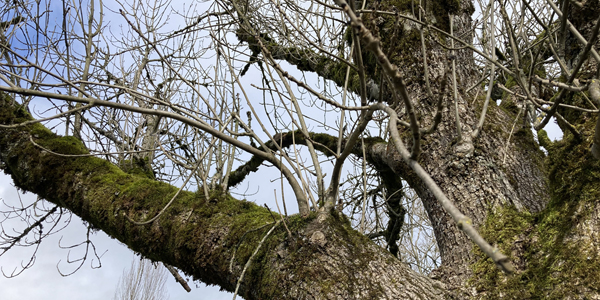
What are we doing?
West Multnomah SWCD is partnering with state and federal invasive insect pest managers to detect signs of EAB in our district and SLOW its spread in Oregon. Specifically, we are:
- Monitoring ash trees on project sites where we know we have native Oregon ash.
- Setting out traps where we know ash trees are growing. We began this step in 2021 to help find any newly arrived beetles in natural areas and urban settings. We are working closely with our federal partner on this effort, U.S. Department of Agriculture Animal and Plant Health Inspection Service (APHIS).
- Assisting partners, such as Oregon Department of Forestry and the U.S. Forest Service, to map Oregon ash statewide.
- Utilizing Oregon Department of Agriculture survey tools to map healthy and stressed ash trees.
- Continuously training ourselves about the best response to the arrival of “EAB” in our area.
- Considering the use of “trap trees.” A trap tree is an uninfested ash tree that is deliberately girdled / slowly killed to attract emerald ash borer to it and spare nearby trees. EAB are especially attracted to stressed ash trees. The trap tree is later cut down if infested and the pest larvae die.
- Learning more about the use of insecticides to kill Emerald ash borer in select trees, as well as the use of parasitoids–predators of EAB in its home range in Asia–which has proved at least partially successful on the East Coast.
- Advising landowners. Please let us know if you have questions or want to help!
- Read more: On the lookout for emerald ash borer in western Multnomah County
Learn more:
- OSU Extension Fact Sheet
- Report any suspected emerald ash borer insects or signs of infestation to: www.oregoninvasiveshotline.orgor call 1-866-INVADER
- Take the free and fun Oregon Forest Pest Detectors Online Course to be a better detector.
- USDA info brochure
- Oregon Department of Agriculture
- USDA Animal and Plant Health Inspection Service (APHIS)
- Oregon Department of Forestry
- City of Portland
- Xerces Society
